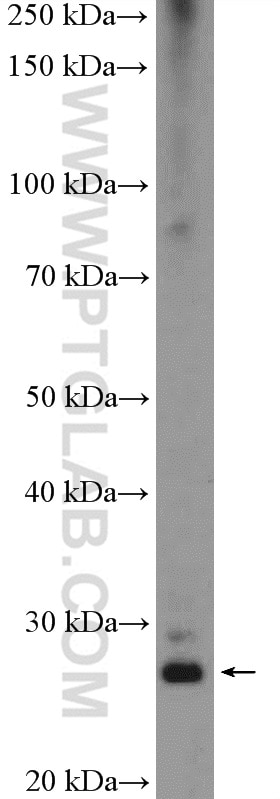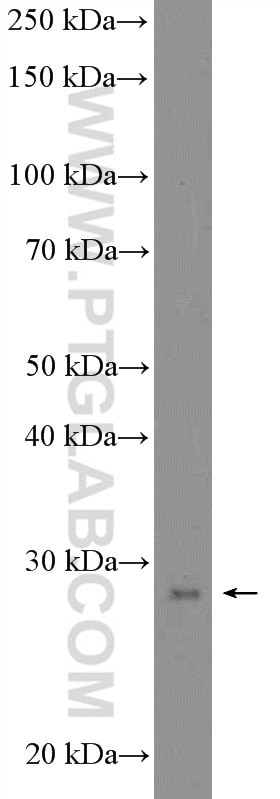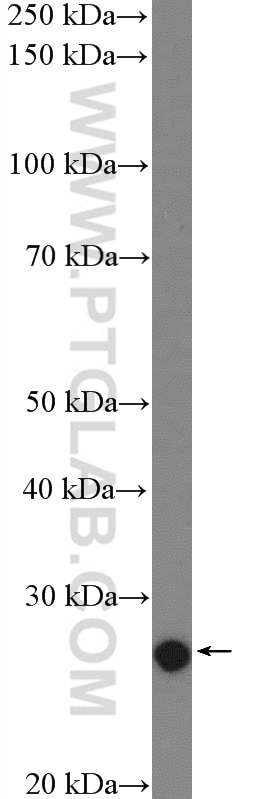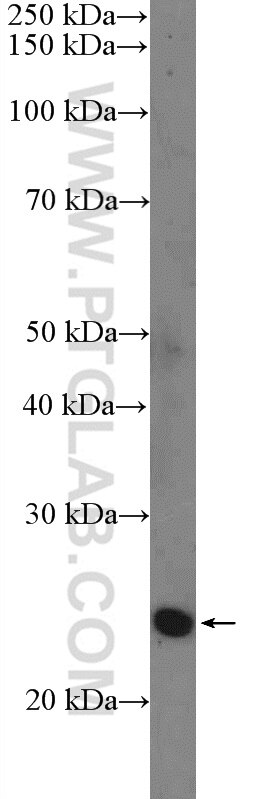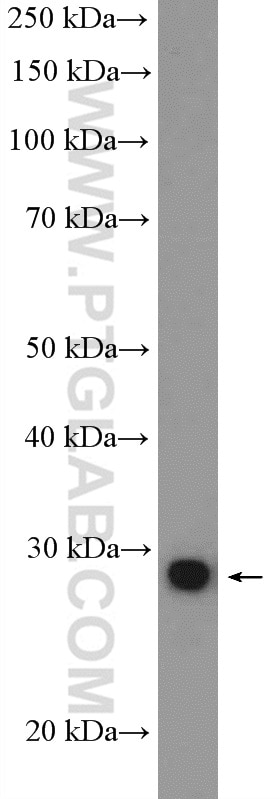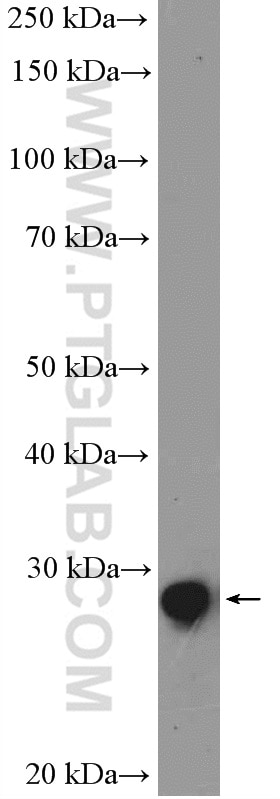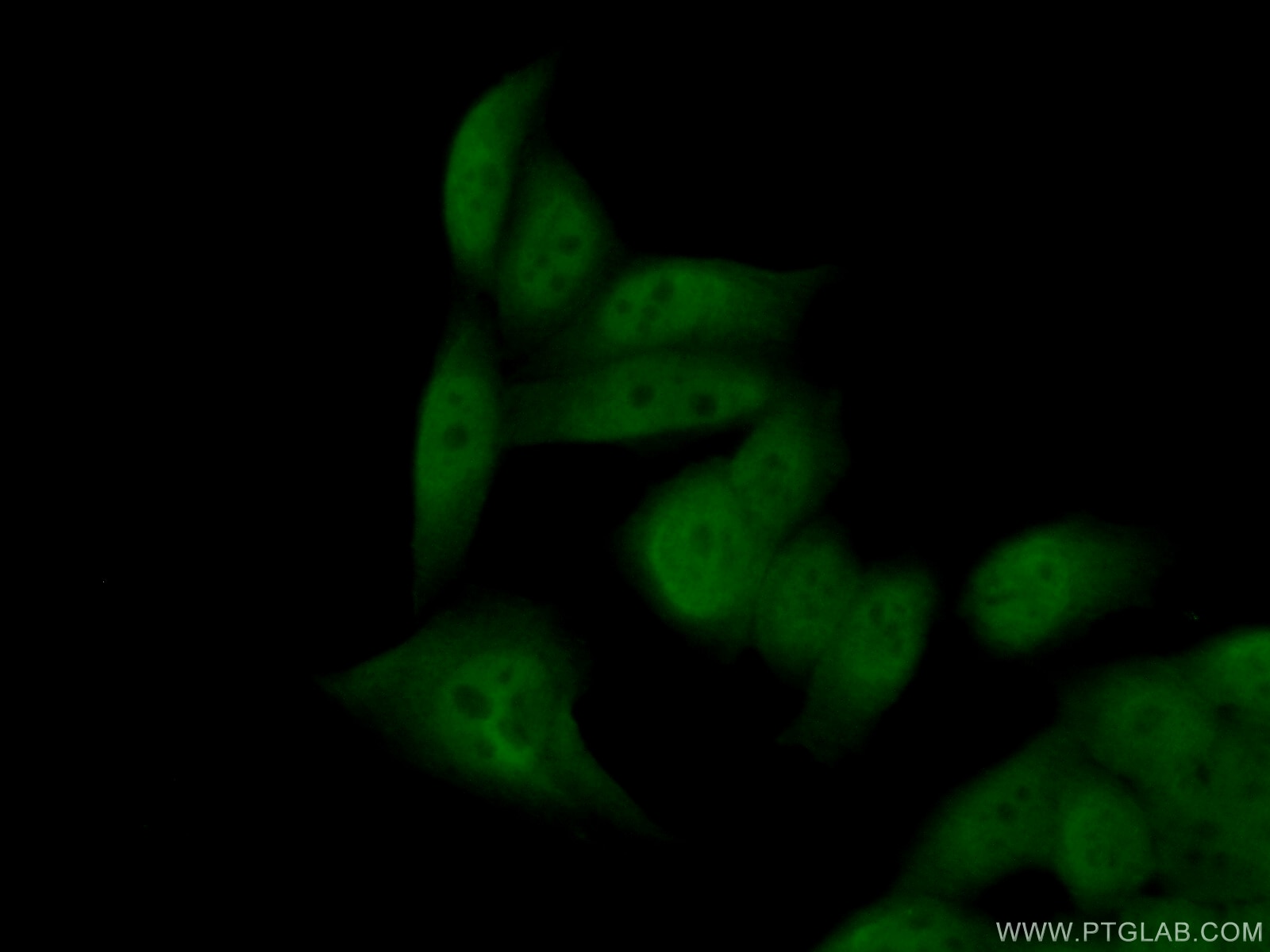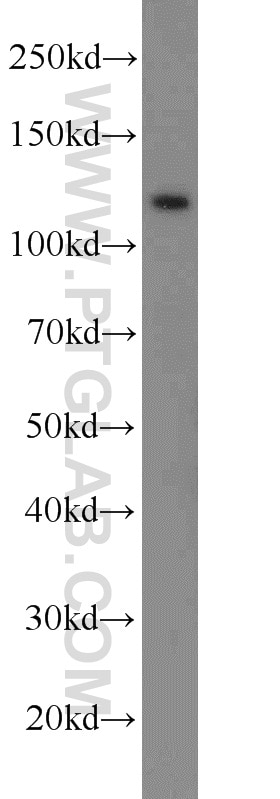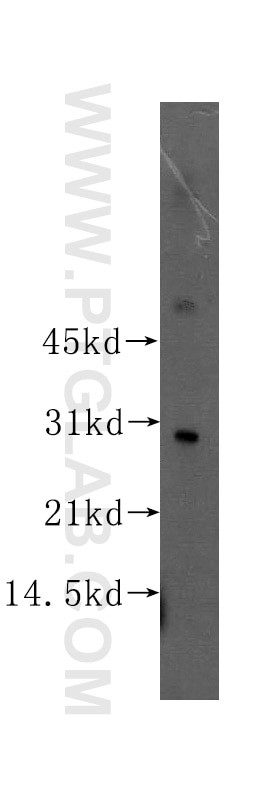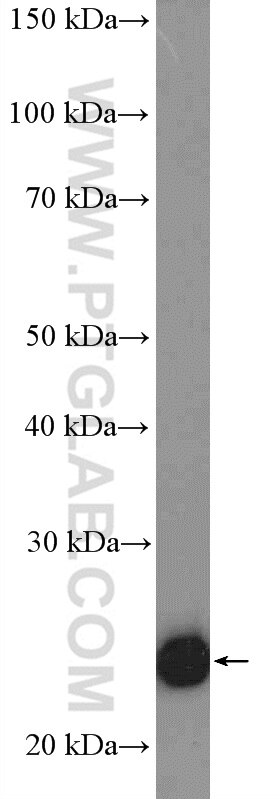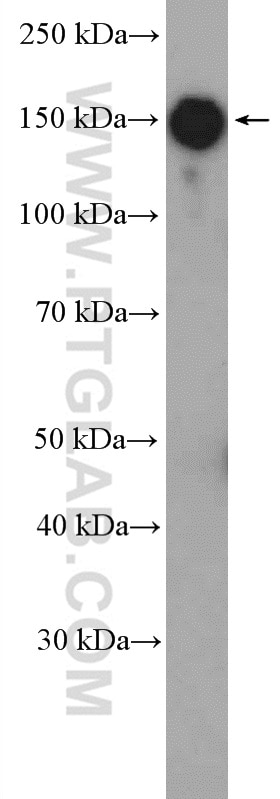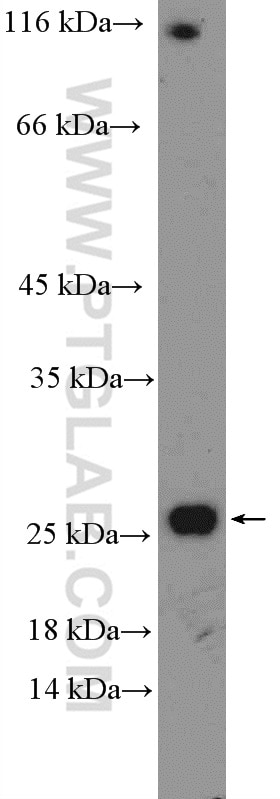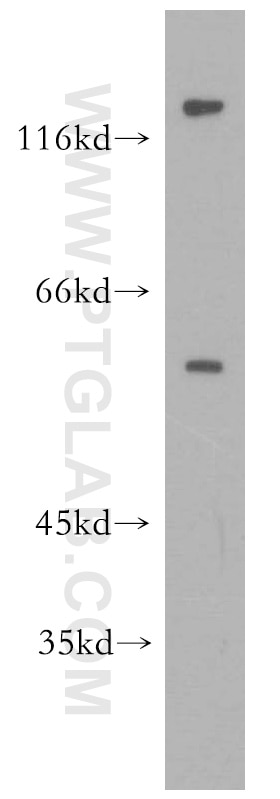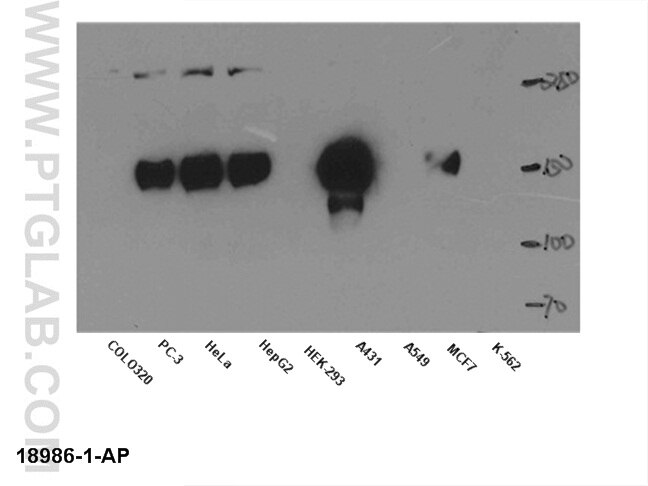SNAI1 Polyklonaler Antikörper
SNAI1 Polyklonal Antikörper für IF, WB, ELISA
Wirt / Isotyp
Kaninchen / IgG
Getestete Reaktivität
human, Maus
Anwendung
WB, IP, IHC, IF, CoIP, ELISA
Konjugation
Unkonjugiert
Kat-Nr. : 26183-1-AP
Synonyme
Galerie der Validierungsdaten
Geprüfte Anwendungen
| Erfolgreiche Detektion in WB | HeLa-Zellen, NIH/3T3-Zellen, PC-3-Zellen |
| Erfolgreiche Detektion in IF | HeLa-Zellen |
Empfohlene Verdünnung
| Anwendung | Verdünnung |
|---|---|
| Western Blot (WB) | WB : 1:500-1:2000 |
| Immunfluoreszenz (IF) | IF : 1:50-1:500 |
| It is recommended that this reagent should be titrated in each testing system to obtain optimal results. | |
| Sample-dependent, check data in validation data gallery | |
Veröffentlichte Anwendungen
| WB | See 19 publications below |
| IHC | See 3 publications below |
| IF | See 2 publications below |
| IP | See 1 publications below |
| CoIP | See 1 publications below |
Produktinformation
26183-1-AP bindet in WB, IP, IHC, IF, CoIP, ELISA SNAI1 und zeigt Reaktivität mit human, Maus
| Getestete Reaktivität | human, Maus |
| In Publikationen genannte Reaktivität | human, Maus |
| Wirt / Isotyp | Kaninchen / IgG |
| Klonalität | Polyklonal |
| Typ | Antikörper |
| Immunogen | SNAI1 fusion protein Ag24248 |
| Vollständiger Name | snail homolog 1 (Drosophila) |
| Berechnetes Molekulargewicht | 264 aa, 29 kDa |
| Beobachtetes Molekulargewicht | 29-35 kDa |
| GenBank-Zugangsnummer | BC012910 |
| Gene symbol | SNAI1 |
| Gene ID (NCBI) | 6615 |
| Konjugation | Unkonjugiert |
| Form | Liquid |
| Reinigungsmethode | Antigen-Affinitätsreinigung |
| Lagerungspuffer | PBS mit 0.02% Natriumazid und 50% Glycerin pH 7.3. |
| Lagerungsbedingungen | Bei -20°C lagern. Nach dem Versand ein Jahr lang stabil Aliquotieren ist bei -20oC Lagerung nicht notwendig. 20ul Größen enthalten 0,1% BSA. |
Hintergrundinformationen
SNAI1, a member of SNAI1 family of protein, participates in the epithelial to mesenchymal transition(EMT) and formation and maintenance of embryonic mesoderm. The snail family share a common structural, that a highly conserved C-terminal region containing a zinc finger transcription factor. SNAI1 interacts with other corepressor, such as Ajuba, PRMT5 and SIN3a or HDAC1 and 2, to repress the target gene. As the phosphorylation modification of SNAI1 protein, the range of molecular weight of SNAI1 is about 25-30 kDa (PMID: 22276203 ). Once phosphorylated (probably on Ser-107, Ser-111, Ser-115 and Ser-119) it is exported from the nucleus to the cytoplasm where subsequent phosphorylation of the destruction motif and ubiquitination involving BTRC occurs.
Protokolle
| Produktspezifische Protokolle | |
|---|---|
| WB protocol for SNAI1 antibody 26183-1-AP | Protokoll herunterladen |
| IF protocol for SNAI1 antibody 26183-1-AP | Protokoll herunterladen |
| Standard-Protokolle | |
|---|---|
| Klicken Sie hier, um unsere Standardprotokolle anzuzeigen |
Publikationen
| Species | Application | Title |
|---|---|---|
Oxid Med Cell Longev XPO1-Mediated EIF1AX Cytoplasmic Relocation Promotes Tumor Migration and Invasion in Endometrial Carcinoma | ||
Aging (Albany NY) Membrane-cytoplasm translocation of annexin A4 is involved in the metastasis of colorectal carcinoma. | ||
Front Cell Dev Biol Targeting MALT1 Suppresses the Malignant Progression of Colorectal Cancer via miR-375/miR-365a-3p/NF-κB Axis. | ||
Oncotarget AEG-1/MTDH-activated autophagy enhances human malignant glioma susceptibility to TGF-β1-triggered epithelial-mesenchymal transition. | ||
J Cell Mol Med Autophagy promotes fibrosis and apoptosis in the peritoneum during long-term peritoneal dialysis. | ||
Cancer Manag Res AOC1 Contributes to Tumor Progression by Promoting the AKT and EMT Pathways in Gastric Cancer. |
